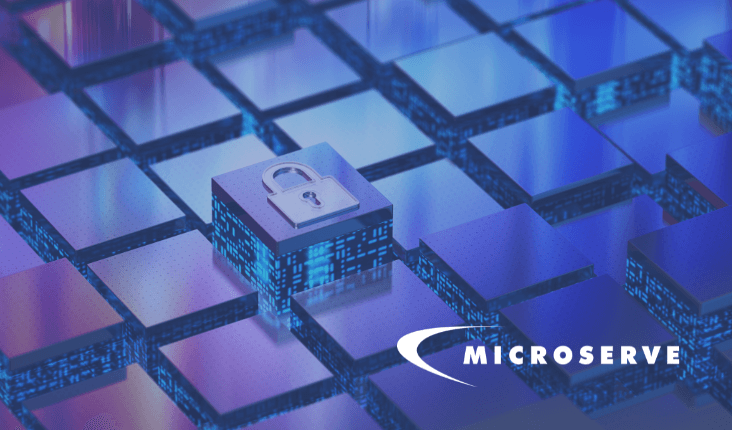Firewall hardening is a crucial part of network security and should be included in your cybersecurity strategy. The process of firewall hardening helps businesses fortify firewall security, control network traffic, and reduce the risk of cyberattacks. Because firewalls are often your first line of defense against cyber threats, hardening your firewall helps prevent malicious traffic and unauthorized users from compromising your corporate network.
In this article, we’ll discuss how to harden your firewall and configure your firewall policies to fortify stronger firewall security measures.
Keep your firewall physically secure
The first step to hardening your firewall and fortifying your security is to keep your firewall hardware physically secure. People with physical access to your firewall can alter firewall settings with USBs, disable your firewall, or load unwanted firmware after a manual reboot. It’s best to keep your physical firewall hardware in a secure place that can only be accessed by authorized personnel. If USBs are not needed for your firewall, we also recommend disabling USB ports for added security.
TIP: You should also enable port security (802.1x) to prevent traffic forwarding from unauthorized devices.
Keep your firmware updated
Firewall providers release updates to fix bugs and vulnerabilities. We recommend keeping your firmware OS updated. Firmware should be periodically updated to resolve important fixes and add new security features. Keep in mind: you should update to the latest stable version of the firewall that is released by the manufacturer, especially if your environment is very large or has many firewalls. On occasion, new updates can be rolled back, and updating to the latest available version can be more painful.
TIP: Read the release notes for new firmware updates to stay informed about the latest security updates and new vulnerabilities that need to be addressed.
Configure firewall policies
Policies determine how traffic flows through the device and what security profiles are applied to traffic. We recommend identifying your critical applications and services required in your environment. You can then configure your firewall policies to allow or deny access to applications or services. Depending on your firewall, you may also be able to apply post forwarding rules to forward traffic from one port to another. For more granular control, you could use application layer rules that allow you to limit access to applications based on application identification.
You should consider configuring cloud firewalls, in addition to your firewall security you use for your on-premises traffic. Like traffic hosted through your on-premises systems, cloud traffic through platforms, applications, and services can also be malicious and needs to be protected. Unlike on-premises firewalls, however, cloud firewalls are hosted in the cloud.
TIP: Follow the principle of least privilege when configuring firewall policies. In other words, grant minimum access levels for your users, applications, and services. Limit access to what is required for you to run your business. Granting permissions above what is required can expose your network to unnecessary risk.
Enable logging for all security events
Monitoring network traffic for unusual activity is key to improving visibility and hardening your firewall and network security. Enabling logging for all security events allows you to track activities on your network and keeps a detailed list of network traffic. This is essential for security and compliance purposes. Logging can also be useful to troubleshoot firewall errors related to firewall performance or other system-level events.
TIP: You can adjust the level of detail in your logs to your preference and business requirements. Various log settings can be configured, such as time stamps, port numbers, source addresses, destination addresses, and more. Having a detailed log can provide more helpful information, but also requires increased storage requirements and more knowledge and time to parse through the information.
Enable HTTPs decryption to inspect encrypted traffic
While encrypting network traffic is necessary to harden your firewall, it can also be exploited by malicious actors. Encrypted data in transit can be targeted because malicious actors can hide suspicious activities behind encryption. For example, a phishing email can infiltrate your systems disguised through an encrypted session when a file is downloaded, and thus could get past your network’s security.
To mitigate this risk, you should decrypt HTTPS traffic. Decrypting traffic allows you to inspect encrypted traffic to identify malicious payloads that can include malware, ransomware, or other security threats.
TIP: Some compliance regulations suggest you enable HTTPS decryption to monitor encrypted traffic, such as HIPAA, PCI, and GDPR. These regulations don’t explicitly require HTTPS decryption but do require strong network monitoring. However, some encrypted traffic may need to be whitelisted, such as certain financial or health-related traffic or applications for legal and privacy purposes. It’s best to investigate the compliance requirements for your organization specifically.
Configure deep packet inspection to detect malicious payloads
Deep packet inspection allows you to investigate the content of encrypted traffic and payloads, helping to mitigate the risk of malware and other security threats. When you configure deep packet inspection, your firewall poses as the recipient of the incoming payload, decrypts it, investigates the contents for malware, blocks malware if present, re-encrypts the message, and sends it to the real recipient.
This can be configured in several ways depending on your firewall provider. For example, FortiGate re-encrypts content after it’s been inspected using a stored certificate. Otherwise, you can upload your own CA certificate.
TIP: For added flexibility, you can exclude specific addresses from deep packet inspection for privacy or legal reasons. This depends on your organization’s needs and compliance requirements.
Enable two-factor authentication and use an SSL VPN
Your firewall helps you manage and control your network traffic; however, it alone does not verify user identity or encrypt network traffic. To harden your firewall security, enable two-factor authentication (2FA) to enhance user identify verification and use an SSL VPN integration to secure remote connection to your internal network through your firewall.
Using 2FA alongside your firewall controls enhances user authentication by implementing a second factor to verify user identity. This additional layer of security, in addition to password protection, helps fortify your firewall security. Even if a password is compromised, 2FA will ensure secure access.
When you use an SSL VPN with your firewall, you can ensure secure, encrypted communication over any internet connection to keep your corporate network secure. An SSL VPN uses an SSL protocol to encrypt data in transit, which protects data from interception for remote access.
TIP: Enabling logging for 2FA and SSL VPN can help you identify anomalies and security threats. Regularly reviewing logs should be part of your security strategy to fortify your firewall security and improve overall security posture.
Beyond the basics: Strengthen your network’s defense
Network security should not be taken lightly. To strengthen your network’s defense system and improve your overall security posture, you need a multi-layered approach to cybersecurity. The steps in this article cover the basics of firewall hardening and are a good start to network security; however, there are more layers of defense you can (and should) add to strengthen your network security.
To get beyond the basics and truly strengthen your network to protect against cyber threats, get in touch with the cybersecurity experts at Microserve. With over 35 years in business, we can help you implement cutting-edge security technology to ensure your network is protected and secure. We offer cybersecurity assessments that help you identify holes in your defense, and we help you mitigate security risks.





